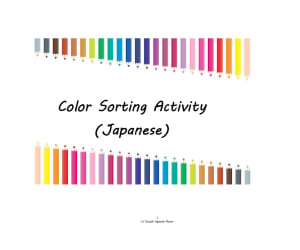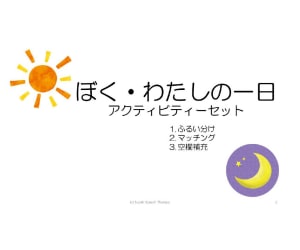2,788 products added recently
Japanese Activities
Enhance your Japanese language classes with activities designed to engage learners and deepen understanding. This collection includes vocabulary games, cultural explorations, and conversation practice exercises. By incorporating these Japanese activities into your teaching, you can create an immersive learning environment that fosters language proficiency and cultural appreciation.
Halloween Prepositions Activity (Japanese)
Foreign Languages, Japanese, Kindergarten, Preschool, Grade 1, 2, Activities
This material is designed for students to learn spatial prepositions in Japanese. Targeted prepositions include: Ushiro (behind), Aida (between), Naka (in), Mae (in front of), Soba (next to), Ue (on), Shita (under). 1. Matching Activity: A student is expected to listen to a sentence and find a picture that matches the sentence. 2. Cloze Activity: A student is expected to complete a sentence using an appropriate preposition to describe a picture. 3. Barrier Game : Two students work in pairs on this activity. Place a barrier between the two students so that they cannot see each others pictures. Each student has a set of the materials. The students take turns giving the other student specific directions in order to match their pictures (e.g., “Put your ghost on the moon.”, “Put your cat under the pumpkin.”). The goal of this game is to have students give and follow directions including spatial prepositions. Thank you for stopping by. I hope your students enjoy this material.
Author Suzuki Speech Therapy
Tags Prepositions Printable, Prepositions Activity, Grammar Worksheets, Japanese Worksheets, Halloween Worksheets, Japanese Prepositions, Prepositions Japanese
Color Sorting Activity (Japanese)
Foreign Languages, Japanese, Kindergarten, Preschool, Grade 1, Activities
Color Sorting Activity (Japanese) is a 16-card set of picture cards and 2 color sorting boards to help young learners practice identifying colors in Japanese. Students will cut out the picture cards showing familiar items like fruit, vehicles, animals, and clothing. Then they will sort each card onto one of the colored sorting boards categorized by the 8 colors: red, orange, yellow, green, blue, purple, white and brown. As students match the picture cards to the appropriately colored sorting board, teachers can prompt them to name the color of each item in Japanese. This hands-on activity can be implemented in small groups or whole class to reinforce color words, matching skills, and fine motor development. The sorting boards can also be repurposed for additional categorical sorting opportunities. This versatile resource allows flexible implementation for early childhood Japanese language learners.
Author Suzuki Speech Therapy
Tags Japanese Printables, Color Sorting Activity, Color Worksheets, Sorting Worksheets, ESL Printable
Making Social Inferences with Real Pictures (Japanese)
Foreign Languages, Japanese, Kindergarten, Preschool, Grade 1, 2, 3, 4, 5, 6, Activities
This is a Japanese version of "Making Social Inferences with Real Pictures. This material consists of two parts: Part 1 includes 15 worksheets with real pictures, focusing on understanding how to make cause and effect inferences; Part 2 includes 20 worksheets with real pictures, focusing on helping students use their prior knowledge and clues from pictures to make inferences.
Author Suzuki Speech Therapy
Tags Social Inferences, Japanese Lesson Printable, Making Inferences Printable, Pictures Worksheet, Language Arts
Daily Routine Activities Set (Japanese)
Foreign Languages, Japanese, Kindergarten, Preschool, Grade 1, 2, Activities
Daily Routine Activities Set in Japanese includes three fun activities for students to learn the phrases to describe their daily routine and understand time concepts. 1. Sorting Activity This activity contains the set of picture cards (16 activities). Students will sort each activity into morning, afternoon, evening, and night. Then, they will ask and answer the questions of "when do you (VERB) ?" & "I (VERB) in the (TIME)." The goal is that the students will ask and answer the when-questions without visual cues. 2. Matching Activity This activity contains a set of picture cards (16 activities) and sentence cards. Students will read a sentence and match a picture to the sentence. 3. Fill in the Blanks Activities There are two sets of worksheets. a. Activity 1 Students will choose the correct words from the list and write them under the correct pictures. b. Activity 2 Students will read sentences and fill in the missing words. Thank you for your interest in my "Daily Routine Activities Set (Japanese)"
Author Suzuki Speech Therapy
Tags Sorting Activities, Matching Activities, Japanese Lessons, Language Printables, Daily Routine Activities, Japanese Daily Routine





